The panchaxes of the genus Epiplatys are species-rich in tropical Africa. In the most recent scientific overview by Huber (2024), 54 species are recognized. Only two of these species are regularly found in the trade, namely E. annulatus (clown killifish) and E. monroviae (red chinned panchax, this species was previously regarded as a subspecies of E. dageti). We can now offer the beautiful species E. chaperi from Angona in Ghana as German offspring.
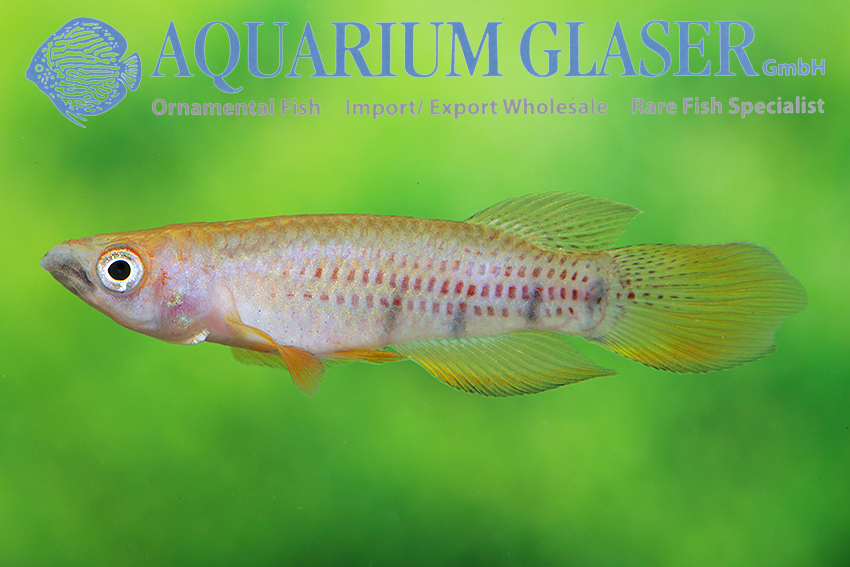
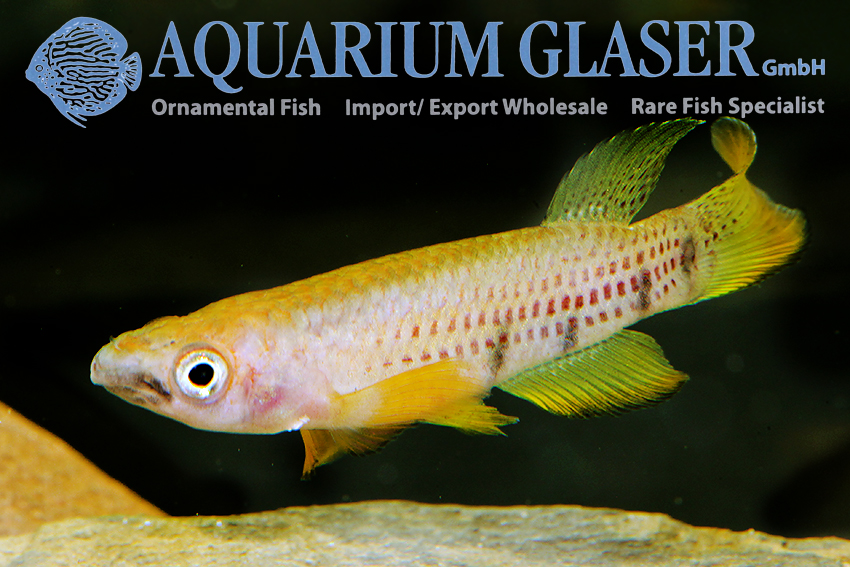
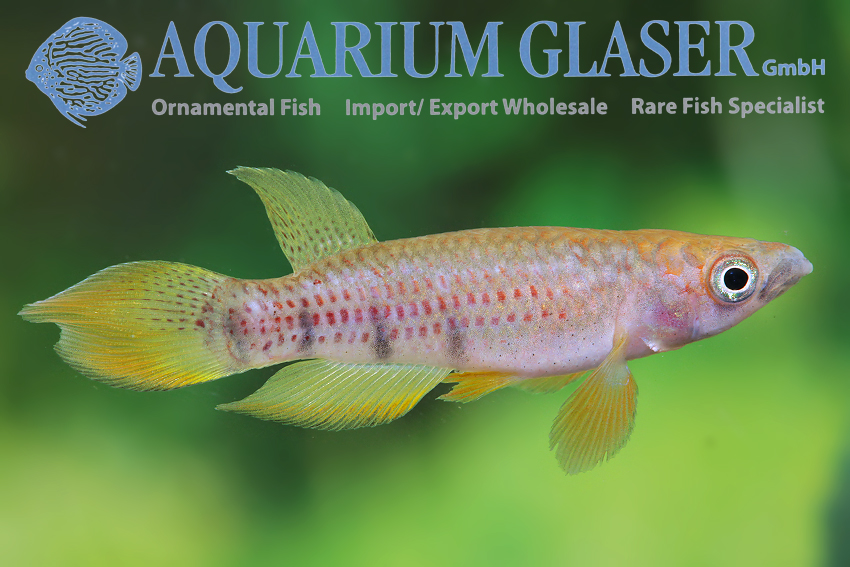
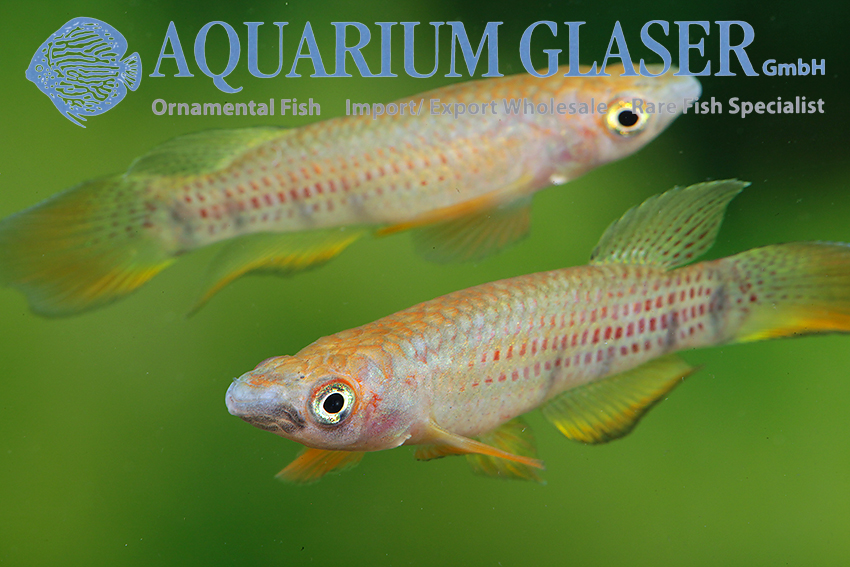
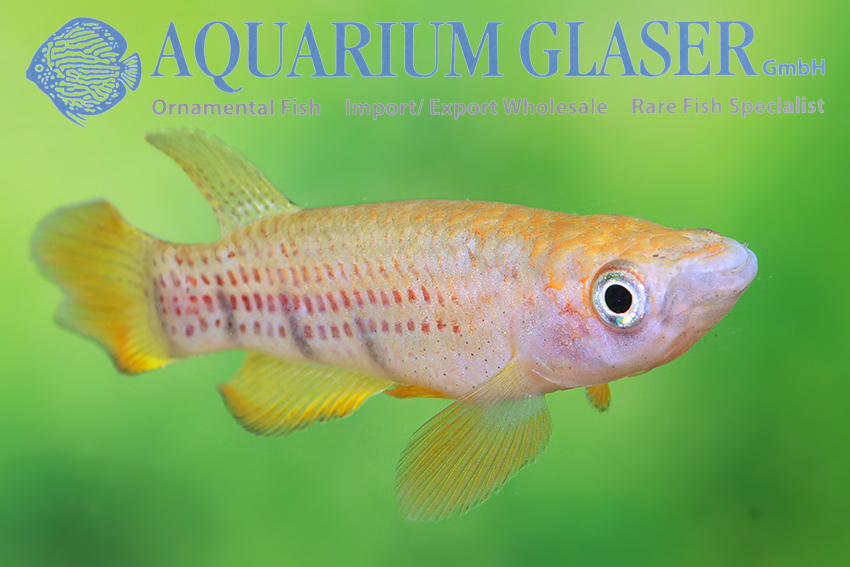
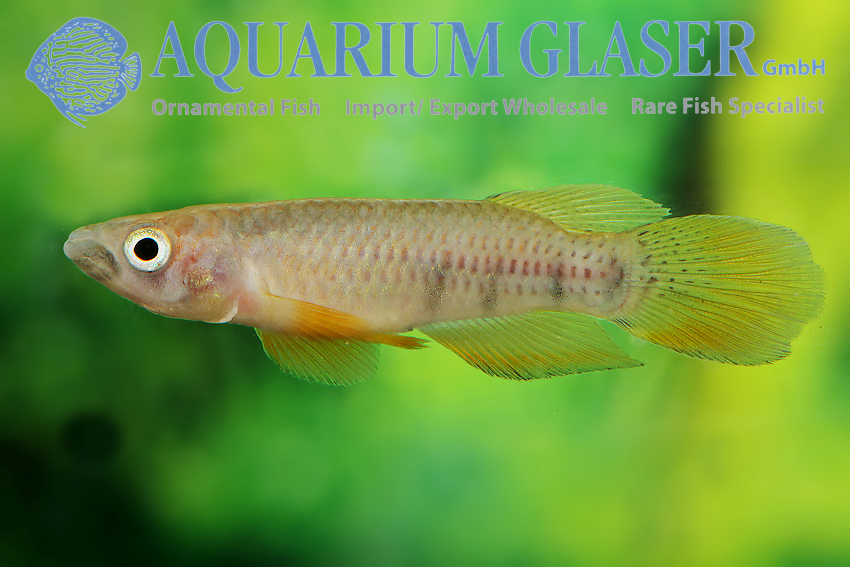
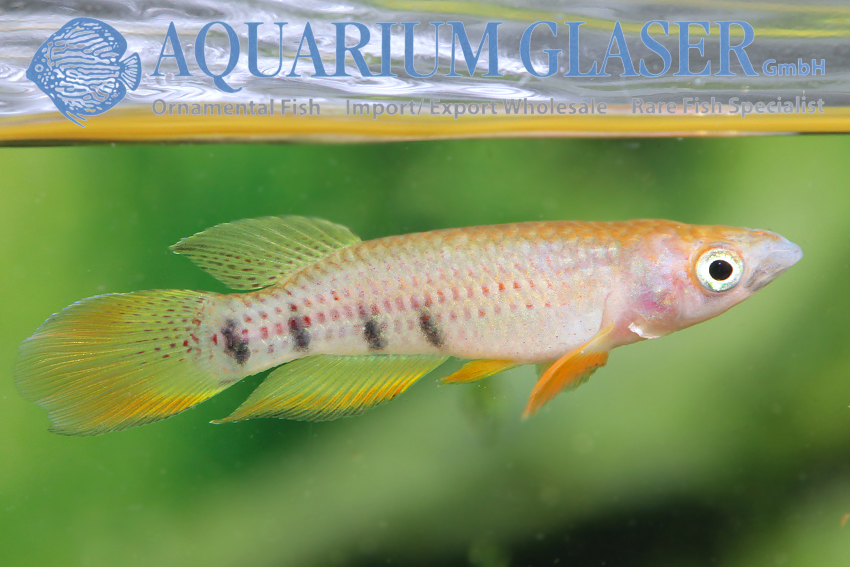
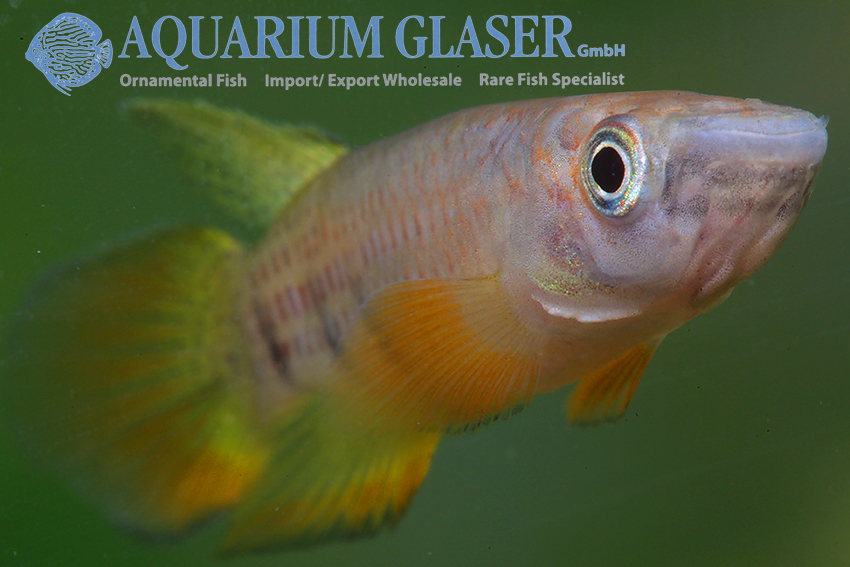
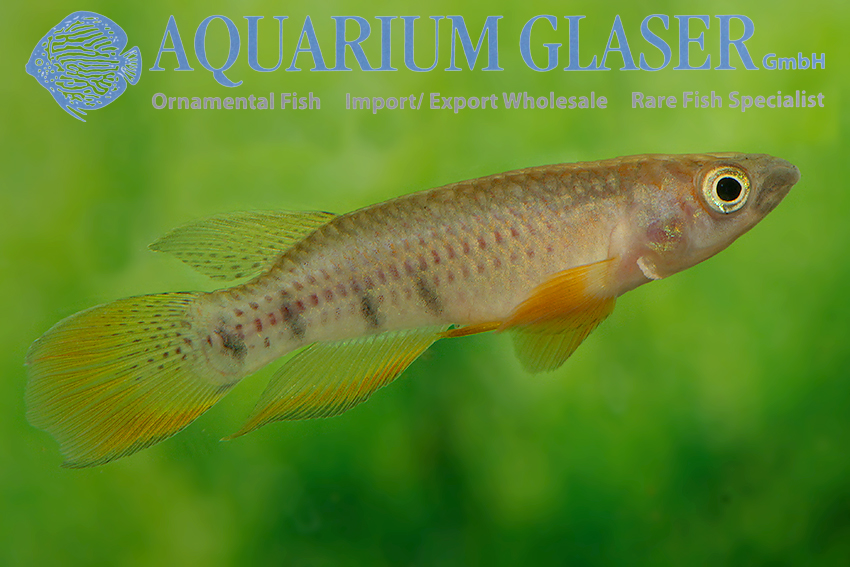
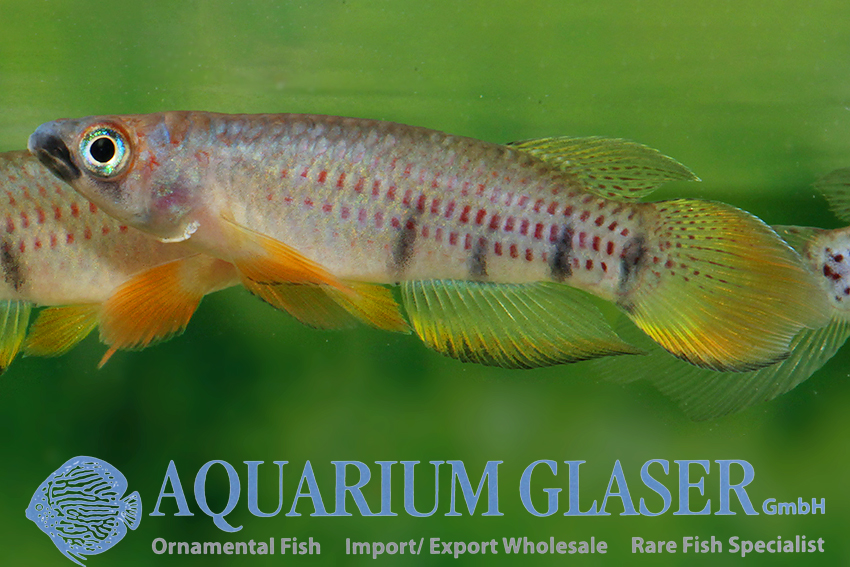
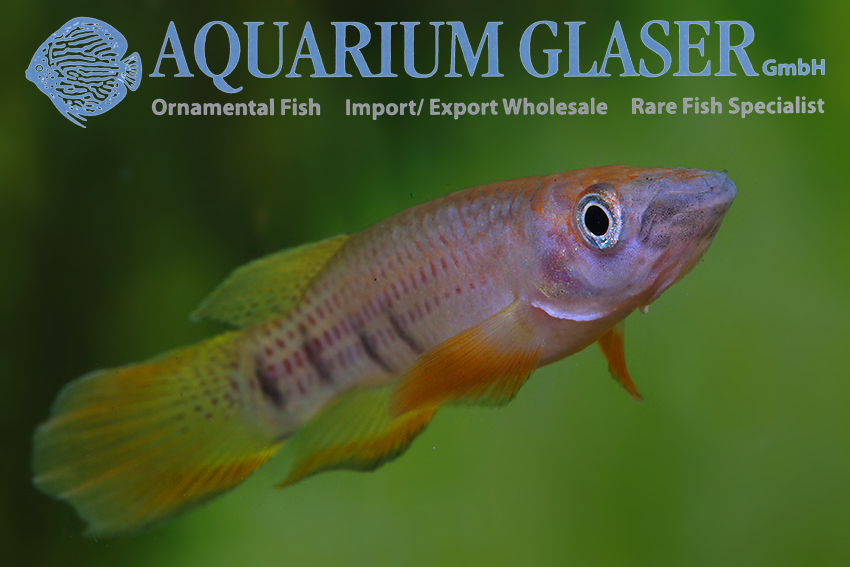
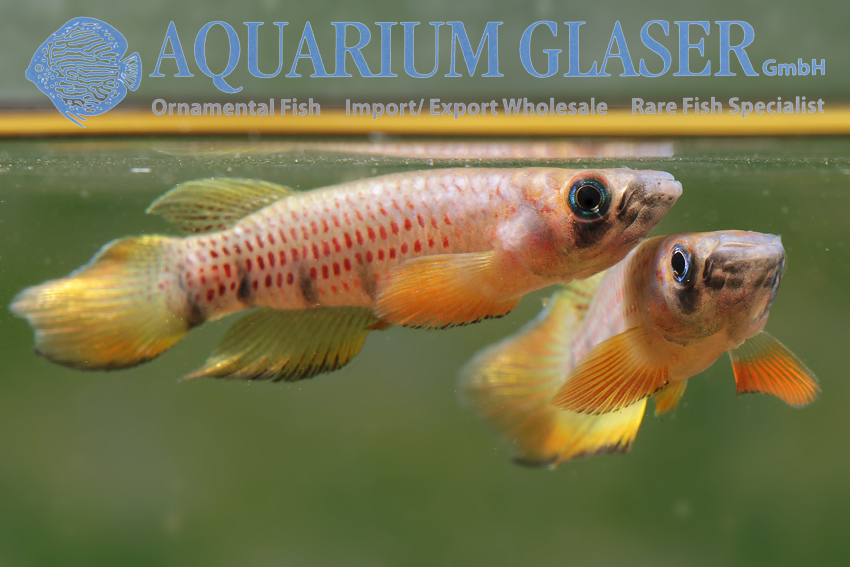
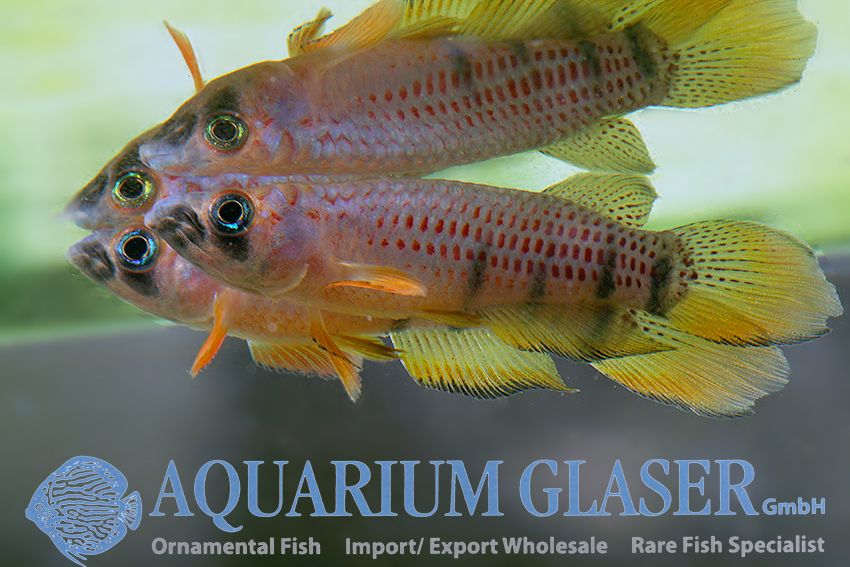
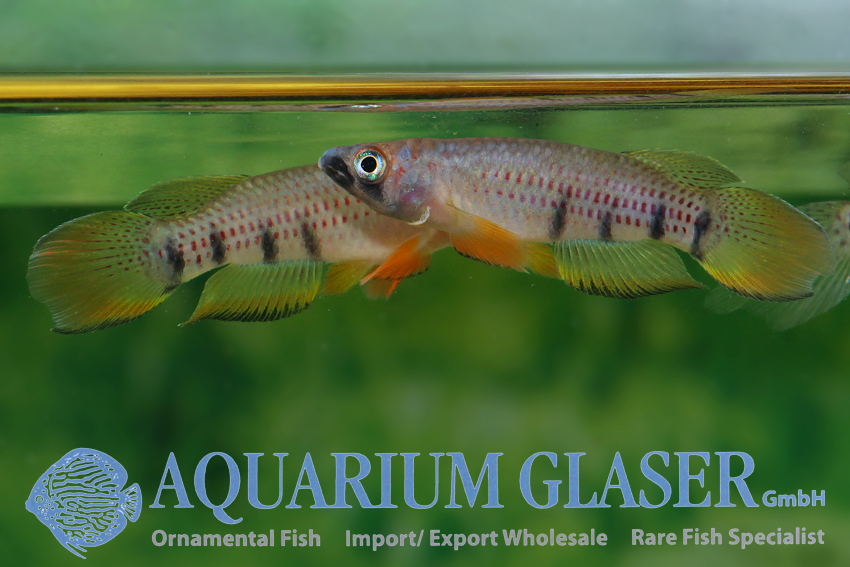
Epiplatys chaperi has a large distribution area in western Africa (Ivory Coast, Ghana and Togo), covering a good 600 km. Until now, five subspecies (chaperi, samborskii, schreiberi, sheljuzhkoi and spillmanni) have been distinguished within this large area, but Huber has elevated all of them to the rank of full species. The locality variant „Angona” has been widespread among Killians for several decades. It can be distinguished from other E. chaperi by its orange-red fins. Over the decades, the “silent post effect” occurred from time to time and Angona became Angola. However, the African state of Angola is located 4,500 km south of Ghana – there are no Epiplatys chaperi there.
Epiplatys chaperi is just as suitable for community aquariums with calm, select companion fish as the closely related species E. monroviae. According to the literature, E. chaperi grows to around 6.5 cm long (including fins). However, these are extremely large specimens. Our specimens are sexually mature and measure only 4 cm in total length. They eat all commercially available ornamental fish food, but preferably from the water surface. No requirements are placed on the water composition. The water temperature should be in the range 22 – 28°C. The spawn of this species does not require a dry phase. The life expectancy of Epiplatys chaperi is 2-3 years, which is the same as for comparably sized livebearers (e.g. platies or mollies).
For our customers: the animals have code 322402 on our stocklist. Please note that we only supply the wholesale trade.
Literature: Huber, J. H. (2024): Taxonomic reappraisal and rearrangement of genus Epiplatys and its generic and specific components, with 2 new subgenera. Killi-Data Series 2024: 4-60.
Text & photos: Frank Schäfer




